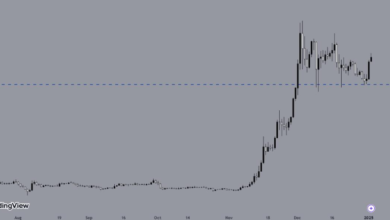How to Align Your Marketing with the Customer Journey

Aligning marketing strategies with the customer journey is a transformative approach that ensures every interaction with a brand resonates with customers’ needs and expectations. The customer journey—encompassing awareness, consideration, purchase, and retention—offers a blueprint for delivering targeted, impactful marketing that drives engagement and conversions. By mapping this journey and tailoring campaigns to its stages, marketers can create seamless experiences that foster trust and loyalty, whether in B2B or B2C contexts. This article provides a practical guide to aligning marketing with the customer journey, offering strategies to optimize touchpoints and achieve measurable results in today’s dynamic marketplace.
Grounding Strategies in Customer Insights
Effective alignment begins with a deep understanding of the customer. Marketers must uncover the behaviors, motivations, and pain points that shape the journey, using data to inform every decision. Quantitative insights, such as website analytics or CRM data, reveal how customers interact with touchpoints. For instance, a B2C retailer might notice high bounce rates on product pages, indicating unclear information, while a B2B vendor could see prospects spending time on technical specs, suggesting a need for detailed content.
Qualitative data adds depth. Surveys, interviews, or social listening can uncover why customers act the way they do. A B2B buyer might express frustration with complex purchasing processes, while a B2C shopper could prioritize fast delivery. By synthesizing these insights, marketers can craft campaigns that address specific needs. For example, a software company might create a webinar addressing integration concerns for B2B prospects, while a fashion brand could highlight free shipping in B2C ads to appeal to cost-conscious shoppers.
This customer-centric approach ensures marketing efforts are relevant, setting the stage for campaigns that resonate across the journey’s stages.
See also: Transforming Your Business With Bookkeeping 6026618891
Mapping the Journey for Targeted Campaigns
A customer journey map is essential for aligning marketing with customer needs. By visualizing touchpoints—such as social media ads, website visits, or sales calls—across awareness, consideration, purchase, and retention, marketers gain clarity on where to focus efforts.
In the awareness stage, marketing should focus on capturing attention. Search ads optimized for keywords like “best CRM software” or social media campaigns on platforms like Instagram can draw in B2B or B2C audiences. During consideration, content like case studies or product demos supports research. A B2B marketer might offer a whitepaper on industry trends, while a B2C brand could provide a video showcasing product features.
The purchase stage requires marketing that simplifies decisions. Clear calls-to-action, like “Request a Demo” for B2B or “Buy Now” for B2C, reduce friction. Post-purchase, retention campaigns—such as loyalty emails or onboarding webinars—keep customers engaged. Mapping these touchpoints ensures marketing aligns with the customer’s path, delivering the right message at the right time.
Personalizing Marketing for Maximum Impact
Personalization is a critical driver of alignment, as customers expect tailored experiences that reflect their unique needs. Data-driven personalization allows marketers to deliver content that resonates at each journey stage. For example, a B2B marketer might use account-based marketing (ABM) to send a customized proposal to a key decision-maker, addressing their specific business challenges. In B2C, a retailer could recommend products based on a customer’s browsing history, displayed via email or on a website.
Technology enables this at scale. AI tools can predict preferences, suggesting relevant content like a B2B case study or a B2C product bundle. Marketing automation platforms trigger timely communications, such as a follow-up email after a prospect downloads a resource. A B2B vendor might send a personalized demo invitation, while a B2C brand could offer a discount to a cart abandoner.
Privacy is paramount. Transparent data practices and compliance with regulations like GDPR build trust, ensuring personalization feels thoughtful rather than intrusive. By aligning personalized marketing with journey stages, businesses enhance engagement and drive conversions.
Ensuring Consistency Across Channels
Customers navigate a multitude of channels—social media, websites, emails, or in-person interactions—and expect a cohesive experience. Misaligned messaging, like a discount advertised on TikTok but absent from a website, can erode trust. Aligning marketing across channels is essential for a seamless journey.
Integrated platforms, like CRM systems, track interactions to ensure consistency. A B2B marketer can use CRM data to ensure a LinkedIn ad’s messaging matches a sales pitch, while a B2C brand can synchronize promotions across its app and website. Regular audits of channel performance, such as reviewing email open rates or social media engagement, help identify discrepancies.
Omnichannel strategies are key. Marketers must prioritize high-impact channels—LinkedIn for B2B or Instagram for B2C—and ensure messaging aligns with the journey stage. For instance, a B2B webinar might target consideration, while a B2C app notification drives purchases. This alignment creates a fluid experience that keeps customers moving forward.
Addressing Pain Points to Remove Barriers
Pain points, such as complex processes or lack of information, can disrupt the customer journey and reduce conversions. Marketers must identify these barriers through data and feedback, then align campaigns to address them.
For example, a B2C retailer might notice high cart abandonment due to unclear shipping costs, prompting a campaign emphasizing transparent pricing. In B2B, a vendor could find that lengthy approval processes deter buyers, leading to marketing materials that highlight streamlined e-signature tools. Customer feedback, gathered through surveys or support interactions, validates these pain points.
Testing solutions ensures effectiveness. A/B testing different landing pages can reveal which design reduces bounce rates, while follow-up surveys gauge customer reactions. By aligning marketing with pain point solutions, businesses create smoother journeys that enhance engagement and conversions.
Optimizing Post-Purchase Marketing for Loyalty
The customer journey extends beyond the sale, with post-purchase marketing critical for fostering loyalty and advocacy. Aligned campaigns in this stage ensure customers feel valued, encouraging repeat business and referrals.
In B2B, onboarding campaigns are vital. A software vendor might offer personalized training webinars to help clients adopt the platform, reinforcing their decision. In B2C, a retailer could send post-purchase emails with product tips or exclusive discounts to encourage repeat purchases. For example, a fitness brand might provide workout guides for customers who bought equipment, enhancing their experience.
Loyalty programs amplify retention. A B2B vendor could offer priority support for long-term clients, while a B2C brand provides rewards points for frequent shoppers. Feedback loops, such as post-purchase surveys, allow marketers to refine these campaigns, ensuring they align with customer needs and drive long-term value.
Leveraging Technology for Precision and Scale
Technology is a linchpin for aligning marketing with the customer journey. CRM systems provide a unified view of customer interactions, enabling tailored campaigns. For instance, a B2B marketer can use CRM data to send a relevant case study to a prospect who attended a webinar, while a B2C brand might track app purchases to offer personalized promotions.
AI enhances precision by predicting behaviors and automating tasks. A B2B vendor might use AI to prioritize high-value leads, while a B2C retailer deploys a chatbot to answer checkout questions, reducing abandonment. Augmented reality (AR) can create immersive touchpoints, like allowing B2B buyers to visualize equipment in their facilities.
Integration ensures seamless execution. A cohesive tech stack enables real-time adjustments, such as refining a campaign based on website analytics. By leveraging technology, marketers align campaigns with the journey’s nuances, delivering scalable, impactful experiences.
Measuring and Refining Campaign Effectiveness
Alignment requires ongoing measurement to ensure marketing efforts deliver results. KPIs like conversion rates, customer satisfaction scores, or retention metrics reveal how campaigns perform across journey stages. A B2B vendor might track demo-to-contract rates, while a B2C brand monitors repeat purchase trends.
A/B testing refines specific campaigns. For example, testing two email subject lines can identify which drives more opens, while comparing ad creatives reveals what resonates on social media. Customer feedback, gathered through surveys or account reviews, provides qualitative insights to complement data-driven analysis.
Regular journey map updates—quarterly or biannually—ensure alignment with evolving customer behaviors. A B2B vendor might incorporate new virtual demo touchpoints, while a B2C brand adapts to increased mobile app usage. This iterative approach keeps marketing strategies relevant and effective.
Staying Agile in a Dynamic Market
Aligning marketing with the customer journey is an ongoing process that demands agility. Customer expectations evolve with trends like sustainability, mobile-first experiences, or data security, requiring marketers to adapt. For instance, a B2C retailer might highlight eco-friendly practices in campaigns to appeal to conscious consumers, while a B2B vendor emphasizes secure data handling to address buyer concerns.
Engaging customers directly through feedback or co-creation ensures campaigns stay customer-centric. A B2B vendor might invite clients to review marketing materials, while a B2C brand surveys shoppers on preferred channels. By staying attuned to these shifts, marketers maintain alignment with the journey, driving sustained engagement.
Ultimately, aligning marketing with the customer journey transforms campaigns into customer-focused strategies that deliver value at every stage. By grounding efforts in data, personalizing touchpoints, ensuring channel consistency, and leveraging technology, marketers create journeys that resonate deeply, fostering trust, conversions, and lasting relationships in an ever-evolving market.



